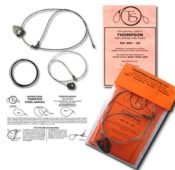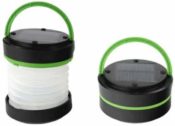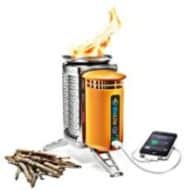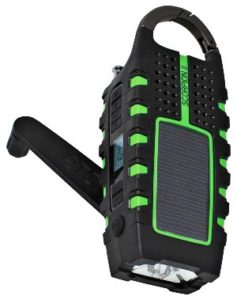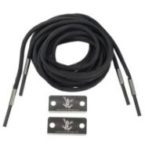
A Complete Guide To Building An INCH Bag For Survival
Because” INCH bag” stands for I’m Never Coming Home.
It’s basically a Bug Out Bag on steroids!
And if you’re building an INCH Bag, you plan to get out of Dodge (never to return).
But with such a choice comes lots of questions.…
- What extra gear should you add?
- What gear should you leave behind?
- How do you keep bag weight reasonable?
Today I’ll answer them ALL (plus so much more)…
TOPICS IN THIS GUIDE… ↓(click to jump)
- Get Home Vs. Bug Out Vs. INCH
- INCH Bag H2O Plan
- Tools For Catching Calories
- Tools For Building Shelters
- Alternative Power Is Important
- Tools For FireStarting
- Best First Aid Supplies
- Misc. Tools You Need
- Tools For Self Defense
- Items You Can Leave Behind
- Consolidation Is A Key Strategy
- INCH Bag Build Action Plan
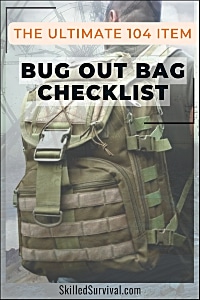
Want a free 104 item bug out bag checklist?
Click here to instantly download this Complete Checklist PDF. No purchase necessary.Get Home Bags Vs. Bug Out Bags Vs. INCH Bags
First off, get home bags are small everyday carry packs with limited gear and supplies.
They include the essential items to help “Get You Home Safe” after a local disaster.
You should take your get home bag with you everywhere you go.
You can leave it in your vehicle, but it should always be close at hand.
The bag is there to help you survive a treacherous trip across town back to your home base.
Now bug out bags cover the ground between the get home bags and INCH bags (which is a very broad range).
They are often built for a few days, weeks, or even the long haul.
This makes building your bug out bag a very personal task.
You can decide what to put in your bug out bag based on your survival goals and needs.
For instance, if you have a bug out location figured out, maybe you built your bug out bag to get you from Point A to Point B fast.
Whether that’s a 30-mile or 90-mile hike, you still have a specific amount of time and distance that your bug out bag was built to support.
However, INCH Bags are built specifically to support an ongoing wilderness survival plan.
With an INCH bag, you’re leaving home and never ever coming back.
Most likely, you won’t be staying long in any single location.
Instead, you intend to live the life of a survival nomad and need a bag to support this effort.
Now that we understand the differences between these three bags let’s discuss some specific differences between bug out bags and INCH bags.
↓ INCH Bag vs. BOB explained in detail
Main Differences Between Bug Out Bags and INCH Bags
INCH bags are heavy.
There’s no way to get around this fact.
To carry all the long-term gear and supplies, you’ll need to stock it completely full with highly self-reliant gear.
For example:
- You’re going to want to carry a hatchet.
- You’re going to need a large stainless steel water bottle.
- You’ll likely want to pack a survival tarp and TACT Bivvy.
- You’ll want to stuff some extra warm clothes into the pack.
All this “extra” gear adds up fast.
So while you should have a target Bug Out Bag weight of 25 to 35 lbs. an INCH bag will easily weigh over 40 lbs. (and could reach north of 50 lbs.)
This is what I call freaking heavy.
Now, unless you’re in great shape and relatively young, a pack in this weight range will be brutal to carry daily.
This extra weight will slow your travel pace and reduce the miles you can hike daily.
But what you lose in speed and distance, you’ll make up in better self-reliant gear and supplies.
If you’re never coming home (and don’t have a permanent bug out location), it’s worth trading slow travel for a more sustainable survival setup.
But the bottom line is that the INCH is more of a young man’s game – as they say.
So what gear do you need to build the ultimate INCH bag?
You need to shift your focus to gear supporting an ongoing nomadic life.
You’ll want to add survival tools that allow you to utilize natural resources to the maximum advantage.
Living off the land and turning wilderness resources into shelters, calories, and self-defense.
So I recommend you read our comprehensive guide to building your bug out bag.
This guide includes 104 items you may want to add to a bug out bag.
Then once you’re familiar with all the best bug out bag gear, it’s time to consider some upgrades.
↓ 10 Tips To Reduce Your Bug Out Bag Weight

Want a free 104 item bug out bag checklist?
Click here to instantly download this Complete Checklist PDF. No purchase necessary.Here’s a list of all the high self-reliant gear you should include:
INCH Bag H2O Plan
You must think about your survival water plans differently when you’re never-coming-home.
Finding water will become a struggle when you’re perpetually on the move.
And even if you find abundant water, you’ll still have to be smart about filtering and purifying it.
In a typical bug out scenario, you toss a couple of LifeStraw Water Filters and some Water Purification Tablets into your bag, and you’re all set.
Any water you find, no matter how nasty, you filter, purify, and drink up.
↓ LifeStraw Review and Field Test
But with an INCH bag bug out, you’ll quickly use up your LifeStraw and Water Purification Tablets.
Leaving you out of tools and forcing you to take chances by consuming contaminated water.
So you need to change your mindset. You should still stash a LifeStraw Water Filter (or two) and a bunch of Water Purification Tablets.
However, you should avoid using them except in dire circumstances.
Instead, you should purify the majority of your water by boiling it.
Yes, it’s a slower process, but boiling is still effective.
That’s why I recommend you only carry a Stainless Steel Water Bottle.
Plastic bottles will melt over fires.
Stainless steel ones allow you to boil water repeatedly without damaging the container.
Since you’ll be boiling the majority of your water for purification, you’ll significantly extend the useful life of your LifeStraw and Tablets.
Thus, saving these unique tools for the nastiest of water sources and times when you must filter and purify quickly on the move due to danger.
Otherwise, collect it, start a fire, boil it, let it cool, and then drink it up.
INCH Bag Tools For Catching Calories
When planning to live off the land for long periods of time, you need the right tools to do so.
You need every advantage you can get, and you need to use them all.
You’ll need to catch fish and snare or trap small game (rabbit, squirrel, raccoon, snake, etc.)
You’ll also need to understand the principles of foraging for edible plants, fruits, and berries and the tools to do so efficiently.
So let’s walk through the tools you need to keep your belly full in the wild.
Compact Fishing Rod
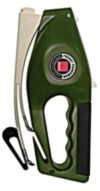
But I prefer pocket-sized rods like this small compact Ronco Pocket Spincaster.
These fishing rods are perfect for snagging a few lake trout or bluegill for dinner.
These rods are no replacement for a Shakespeare Ugly Stick Rod.
But they are compact, lightweight, and can still provide an ongoing supply of nutritious fish protein.
YoYo Fishing Reels
These Yo-Yo Reels are a “must-pack” item to take your fishing efforts to an entirely new efficiency level.
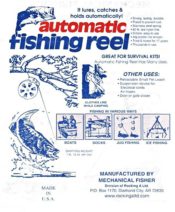
That way, you can finish some other survival tasks and return later to (hopefully) reel in your catch.
Fishing Tackle
This one’s obvious.
If you intend to catch fish, then you need all the hooks, swivels, weights, and accessories to go with it.
Pack extra because once you’re out, you’ll have to barter for more (if you can find any at all).
 Small Game Snares and Traps
Small Game Snares and Traps
Survival Snares follow the same general principle as the Yo Yo Fishing Reels but for the protein of the four-legged variety.
You set them and walk away.
Then periodically come back to check on them.
They take up very little pack space and are lightweight, making them a no-brainer addition to every INCH Bag.
Survival Slingshot

With the right Survival Slingshot, you can take down both small game and even some medium-sized game.
Plus, you can carry a ton of slingshot ammo and even use natural stones as ammo in a pinch.
The slingshot is an excellent weapon for replenishing your survival food.
And it should find a small compartment in your INCH Survival Bag.
Survival Bow
You essentially have three choices when it comes to choosing a survival bow.
You can go with a modern compound bow, a recurve takedown bow, or a quality crossbow.
The biggest advantage of choosing a takedown bow is its ability to break it down into smaller component parts.
This allows you to pack your bow away while traveling.
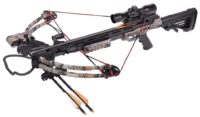
But with this option, you’ll have to attach your bow to the outside of your INCH Bag.
The third option is the crossbow, which also doesn’t easily break down for storage.
But allows you to walk around with it cocked and ready for action at all times.
The bottom line is I would never dream of leaving home without a Takedown Bow or Compound Bow, or CrossBow.
If you agree with me, you can decide which works best for you.
Want a free 104 item bug out bag checklist?
Click here to instantly download this Complete Checklist PDF. No purchase necessary.
Tools For Building Badass Survival Shelters
Survival Hatchet

What sort can you live in safely for weeks or months?
Then you need the ability to chop down large trees, logs, and branches.
Yes, a durable survival knife can do this work too, but it’s not ideal for the job long term.
And if you use the batoning technique and a survival knife over the long haul, it will take a major toll on your knife.
So I recommend packing a lightweight survival hatchet and learning how to use it to build strong survival shelters.
This Gerber Survival Hatchet is full tang and weighs only 1.4 lbs., making it an excellent choice.
Survival Shovels
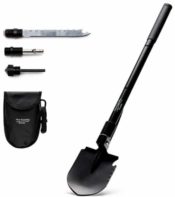
It’s a miserable task, takes a lot of extra time, and burns lots of valuable calories.
On top of that, if you’re “never coming home,” you’ll want to avoid unwanted attention.
One of the best ways to avoid unwanted attention and wasted energy is to use a survival shovel to build a Dakota fire hole.
These are hidden fires you can safely burn at night.
For this task alone, you’ll want a sturdy survival shovel.
You’ll also want a shovel to help build the best survival shelters possible.
Using techniques like trenching around your shelter to shed heavy rainwater away.
Or anchoring logs into the ground for better foundational stability.
Bivy Sack

A survival shelter is just the outside layer of protection from wind and rain.
But bitter cold will still creep in.
And you can still freeze to death if you sleep on the frozen ground.
Instead, this small but effective TACT Bivvy Sack is the ideal piece of gear to store in your INCH Bag.
You can’t afford to carry the weight and size of a sleeping bag.
But with a TACT Bivvy, you get something better than a sleeping bag to keep you warm without taking up valuable INCH Bag space.
↓ Bug Out Bag Shelter – TACT Bivvy Review

Alternative Power Is Your Best Friend
Solar power, biomass energy, and hand crank technologies are sources of power that don’t rely on the grid.
Unlike the grid (which relies on modern society to function), these alternative power sources can be relied upon even if our society totally collapses.
Solar Lantern
If you’re on the move and never coming home, you’ll need the power of illumination to help you.
But batteries run out, and you won’t be able to plug anything in.
So you have to take advantage of a solar lantern. That’s why you should invest in this Solar Pocket Lantern.
The design is ideally sized for your INCH Bag, and since it’s solar-powered, you can rely on it through thick and thin.
Solar Headlamps

You want to have a good source of illumination, and you want it to be hands-free.
Set your solar headlamp out in direct sunlight during the day, so it’s ready to use at night.
No grid power is necessary.
Solar Battery Charger Setup

This Goal Zero Solar Recharging Kit is ideal for using solar power to charge your devices and includes a set of good rechargeable batteries.
↓ Portable Solar Panels – Goal Zero Kit Review
 Biomass Camping Stove
Biomass Camping Stove
You’ll build fires anyway, so you might as well get some “free” energy from the process.
The Biomass Camping Stove is a relatively new and impressive survival invention.
It allows you to charge any device with a USB port using a fire’s heat.
That’s a technology that’s hard to pass up for long-term survival.
Solar Survival Watch

The best survival watches are solar-powered.
The face of these watches includes a small solar panel.
So just by wearing it for a few hours during the day, this watch keeps ticking for the long haul.
The top-of-the-line survival watches include temperature, barometer, and compasses, making them essential devices for INCH Bag survivalists.
I’m a fan of the G-Shock Rangeman Watch Series.
Hand Crank Radio
The hand cranks are small power turbines that create power via a hand crank.
While this form of energy is not passive like solar, it’s nice that you can generate some energy anytime, day or night.
Most of these radios have a USB port to charge small electronic devices; the hand crank also charges your emergency radio.
The radio lets you keep tabs on what’s happening around you via any emergency broadcasts.
You can also use them to power up a cell phone (for a very short call) in an emergency situation.
Check out Jason’s video review of a similar hand-cranked radio:
↓ Hand Crank Radio Review
Want a free 104 item bug out bag checklist?
Click here to instantly download this Complete Checklist PDF. No purchase necessary.
Tools For FireStarting
Tesla Electric Lighter
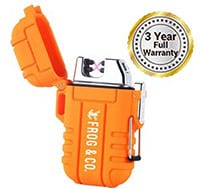
They both require liquid fuel to use.
Guess what won’t be readily available in a long-term survival situation? Fuel.
So instead of running out of fuel, pack this Telsa Electric Lighter instead.
We already discussed a few ways to create power on the go (biomass stove, hand crank radio, solar generator).
So you need to invest in these alternative power sources and pair them with tools (like the Telsa Lighter) that can take advantage.
 Fire Laces
Fire Laces
Finding ways to pack gear outside your pack is an excellent tactic when your bag will be heavy no matter what you do.
Every single oz. of weight matters.
That’s why you should replace something with limited survival utility (shoelaces) with something that has a ton of survival utility (FireLaces).
The tips of these FireLaces are mini ferrod rods, and they come with razor-sharp strikers that you thread into your survival boots.
It's another no-brainer piece of survival gear when you’re planning to live on the go.
↓ Fire Laces Review (I started a fire in my office!)
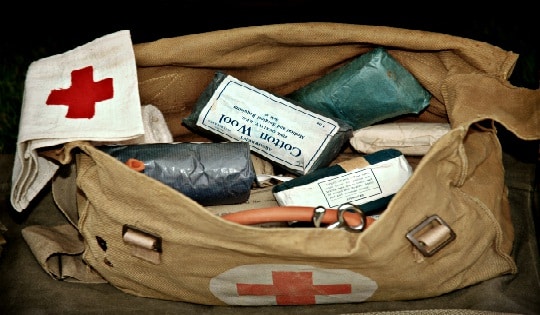
First Aid Supplies
First aid items are low use (hopefully), but they still deserve some space in your bag.
Not having a tourniquet, medical gauze, or painkillers may leave you stranded in the wilderness “left for the wolves.”
Small First Aid Kit
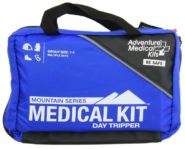
You’ll need to prioritize and worry most about the “worst-case” injuries.
But you should also worry about small cuts due to the potential for infection.
So add a small adventure medical kit to cover most of your wilderness medical needs.
Antibiotic Cream
A tube of antibiotic cream (such as Neosporin) used sparingly will prevent a simple scratch from turning into a deadly infection.
You know, the sort of infection that develops into the scary red line running up your arm.
An ounce of prevention is worth a pound of cure.
Survival Antibiotics
And what’s your plan if you do develop a severe infection?
Hope you don’t die. That’s a terrible plan.
Instead, invest in a few survival antibiotics.
They don’t weigh much, so you should be able to find a small nook or cranny in your INCH Bag for these lifesavers.

Want a free 104 item bug out bag checklist?
Click here to instantly download this Complete Checklist PDF. No purchase necessary.Misc. Tools You Need
Survival Knife

I highly recommend investing in a good one.
This crucial survival tool must last a very long time. And it will treat you well if you treat it well.
Survival Multitool – Pliers
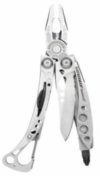
Being able to pinch, grab, twist, and cut small objects is essential for survival.
If you plan to reuse devices, fix items, etc., you need a good set of pliers.
Gas Mask
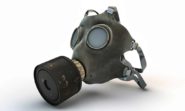
And when SHTF, even the air you breathe may not be trustworthy.
Better safe than sorry. Here’s our how-to buy a gas mask guide.
Choking to death is not something I’m interested in experiencing.
Military Compass
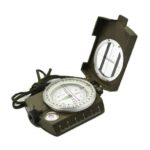
At the very least, you can travel on a straight path to avoid just walking in large circles.
Getting your bearings without a compass can be challenging, especially in a dense forest.
So toss a high-quality military-grade compass into your pack to help you navigate your new nomadic existence.
Tools For Self Defense
Survival Rifle
The actual make and model of your survival rifle is a personal choice.
I prefer a good takedown 22 rifle, so I can break it down and pack it into my Bag.
Plus, the 22-round is one of the lightest rounds to pack and carry.
As soon as you move into higher caliber rifle rounds, you add significant ammo weight.
Items You Can Leave Behind
Let’s get this straight.
If you’re building an INCH Bag, you plan to live off the land.
You also have zero expectations of life being luxurious.
No more indoor plumbing, no more grid electricity, no more warm showers, no more plates, no more pillows.
These items are bulky, heavy, and a luxury. They must be forgotten and left behind.
Let’s discuss the biggest items you need to take out of your INCH pack.
- Since you will add a TACT Bivvy Sack (and know how to build a survival shelter), you can ditch the tent, sleeping bag, sleeping pad, and hammock. These are the heaviest and largest items, so they are the first things I remove from my INCH Bag.
- Since you won’t be boiling freeze-dried food and instead you’ll be fishing, trapping, and foraging, you won’t need a camping stove or stove fuel. You will build fires using nature, such as downed sticks and logs.
- Next up, you’ll need to consolidate how much “extra” clothes you pack. As soon as you add 3 shirts, 2 pairs of pants, socks, underwear, etc., you’ll find these “luxuries” won’t fit in your already overloaded pack. So trim your spare clothes down to the minimum. 1 shirt, 1 pair of tactical pants, 1 pair of spare socks, and 1 pair of underwear. Then you can occasionally swap what you’re wearing with these spares and clean, dry, and rotate.
Pack these spare clothes up in a Skivvy Roll to save space.
Consolidation Is Key
It’s your bug out plan. It’s your INCH Bag.
But everyone reading this should take gear consolidation seriously.
For example, if you decide to add the Survival Shovel we discussed above, you can forgo adding any duplicate gear.
Why? Because this particular survival shovel is not only a shovel but also includes two saws, a fire starter, a glass breaker, a pickaxe, a whistle, two bottle openers, and a knife.
As long as these extra pieces of gear are high quality, there’s no need to carry duplicates.
Smart consolidation alone will save you a ton of unnecessary weight and precious pack space.
Use this shovel example with all your INCH Bag gear to build the perfect INCH bag.
“Always consolidate your gear as long as it doesn’t come as a sacrifice to quality.”
Action Plan
Let’s wrap this up.
I recommend you decide today whether to build a Bug Out Bag (a.k.a. go bag) or an INCH Bag.
While these bag builds are similar, there is enough difference to warrant a decision.
You also don’t want to invest in both you can avoid it.
The cost of having both bags set up and ready to go at the drop of a hat would be expensive.
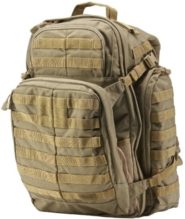
I like the 5.11 tactical bug out bag.
It has lots of room and compartments to fit all your gear and padded straps to make carrying a heavy load a little bit easier.
Once you have your bag, you need to start accumulating all the INCH gear into your bag.
If you already have a bug out bag and want to convert it to an INCH bag then you’re well on your way.
You’ll need to add a few key items we discussed above and possibly remove a few items as well.
However, if you don’t already have a bug out bag, then you’ll need to start from scratch.
That’s ok, too; we’ve got you covered.
Just review our Bug Out Bag Checklist first and reread this post to make a master list of all the gear you want to include.
Why Trust Skilled Survival...
Go here now to review a full breakdown of:
- Who We Are
- Our Credentials
- Our Mission
- & Product Recommendations...
Here are a few highlights of our teams credentials & certifications:
- Certified Member of a Mountain Search & Rescue Organization
- Plant Emergency & Safety Leader for a Major Food Manufacturer
- Member of the 10TH Mountain Division Hut Association
- Certifications: Avalanche 1, WFR, CPR
- Official Gear Tester for Numerous Outdoor Gear Companies
- Countless Multiday Backpacking trips into Remote Wilderness
- Bachelor's Degree In Mechanical Engineering
- Bachelor's Degree In Civil Engineering
- Bachelor's Degree In Biomedical Engineering
"It takes 20 years to build a reputation and five minutes to ruin it." - Warren Buffett
We're fully aware that trust is NOT something you GET but is EARNED.
And we'll continue to earn YOUR trust through our forthright and honest approach with each new Blog Post, Guide & Product we create...
Prepare, Adapt & Overcome,

P.s. Do You Live In A 'Danger Zone' County?
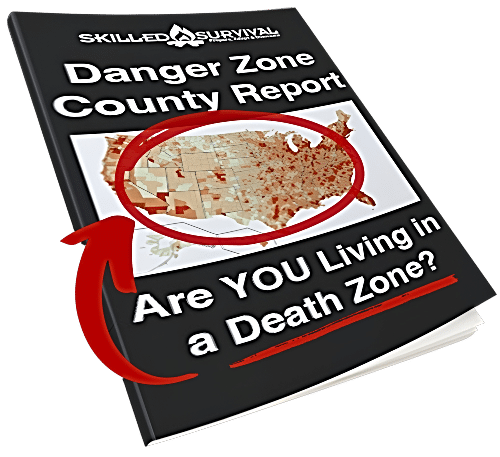
Find out now using my Danger Zone County List & Special Report it’s absolutely FREE.
In minutes you’ll know EXACTLY where you stand and if you should be worried or not..
So click here to get my FREE Danger Zone County List & Report…
Top Photo Source
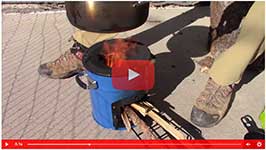
Recommended Reading
Best Bug Out Bags: The Most Reliable Pack Experts Trust
You deserve a bug out bag you can trust; a pack to protect all your gear. Here's how to find a good one and avoid making amateur mistakes.
Bug Out Bag Weight: How To Reduce Every Deadly Pound
10 advanced tactics to reduce your bug out bag weight because a heavy bug out pack will slow you down. And a slow getaway can get you killed.
Bug Out Location: Finding A Perfect One You Can Afford
There are 7 must-have qualities for a perfect bug out location . I show exactly what they are and how to find an affordable one in minutes...
Bug Out Vehicles: The Best Setups To Escape The Chaos
A good bug out vehicle will help you make it out of chao to safety FAST. I show you the best options and capabilities to design your own rig.
Bug In Vs Bug Out? Smart Or Guaranteed Death Trap
One of the hardest SHTF decisions is: Bug In vs Bug Out. You should plan for both because there some situations where you may have to leave.
Bug Out Bikes: The Most Reliable Way To Escape Chaos
A simple 6 step action plan to turn a regular bike into a badass, terrain crushing bug out bike - to escape the chaos without traffic jams.




